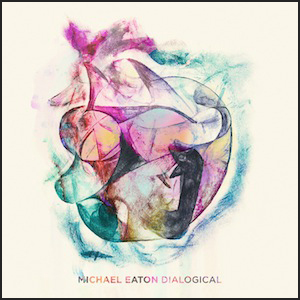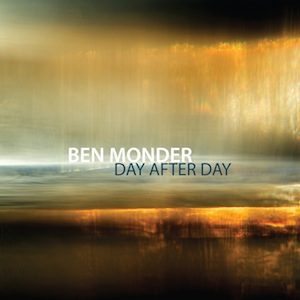Label: SteepleChase, 2019
Personnel - Billy Drewes: saxophones, bass clarinet; Kirk Knuffke: cornet; Frank Kimbrough: harmonium; Jay Anderson: bass, Tibetan singing bowl; Matt Wilson: drums; Rogerio Boccato: percussion.
Maneuvering his instrument with certitude, American bassist Jay Anderson spotlights a shifting cast of expert musicians in varied configurations on Deepscape, his first SteepleChase outing as a leader. Besides two original compositions that reflect his rare relationship with melody, the bassist selected two standards and some off-the-beaten-track tunes by composers with disparate personalities such as Morton Feldman, Keith Jarrett, Gil Evans, Billy Joel, Branford Marsalis, and Jim Pepper. With this wide stylistic range in mind, he convened a fabulous ensemble whose format keeps varying throughout the record - Billy Drewes on saxophones, Kirk Knuffke on cornet, Frank Kimbrough on harmonium, Matt Wilson on drums, and Rogerio Boccato on percussion.
On the title track, Anderson exhibits that big, round, and soulful sound that characterizes his playing over a pre-created drone. This solo piece exhibits a shimmering meditative nature that is also perceptible on the fifth movement of Morton Feldman’s “Rothko Chapel”, a relaxing exercise containing tuneful soprano/arco bass unisons, a Tibetan singing bowl cadence carried out with clock precision, subdued drumming and cymbal color, and salient harmonium interjections and echoing melodies. Kimbrough, who is an excellent pianist, is found here exclusively playing the latter instrument, including a duo with the bandleader on the closing piece, “Tennessee Waltz”.
A chordless approach was picked out to tackle a couple of tunes by pianist Keith Jarrett, listed on his 1976 quartet album Shades. “Shades of Jazz” shows the band immersed in bop-ish happiness, whilst “Southern Smiles” is cooked up with fine post-bop ingredients and generous dashes of folk and gospel. Both tunes feature Drewes and Knuffke throwing enough zest to force the listener to pay attention. On the latter piece, they have the bassist making them company as a soloist.
If Billy Joel’s “And So It Goes” is rendered solo, Gil Evans’ “Time of the Barracudas” has its block chords re-orchestrated for the collective in a daring 12/8 tempo. Boccato’s percussive routines are not only befitting but also infuse liveliness.
Anderson’s melody-centric “Momentum” goes well with the rest of the material, just like Jim Pepper’s “Witchi-Tai-To”, a beautiful piece that was notably interpreted by Oregon and Jan Garbarek in the past. Here, it is harmoniously introduced by the bassist and features the declarative force of Drewes on soprano.
Anderson’s low-toned charms permeate the album consistently, giving rise to appealing musical moments that freshen a wonderful repertoire.
Grade B
Favorite Tracks:
04 - Southern Smiles ► 06 - Time of the Barracudas ► 09 - Witchi-Tai-To








































